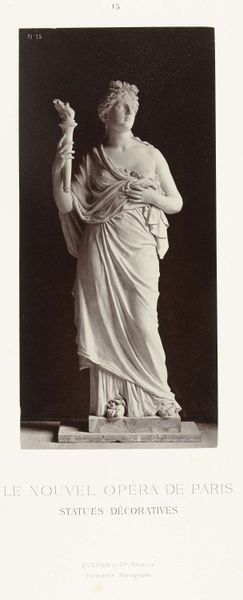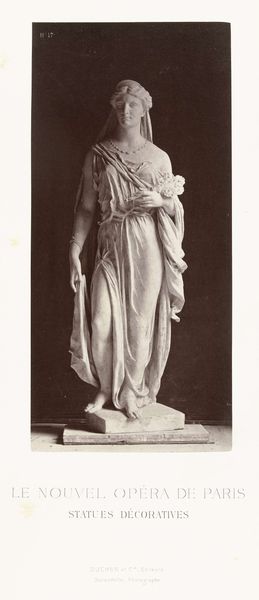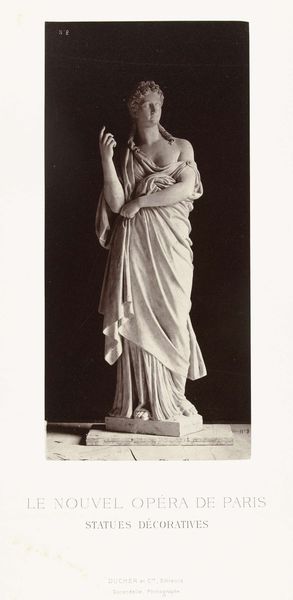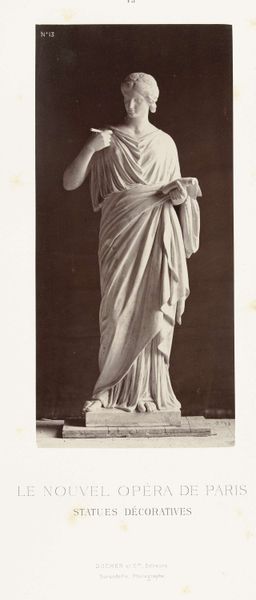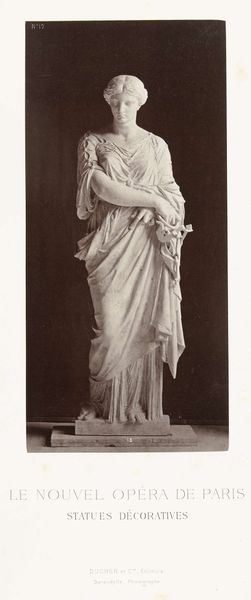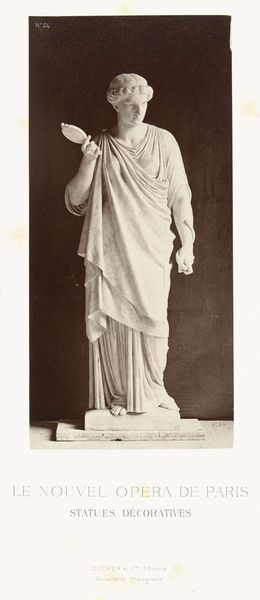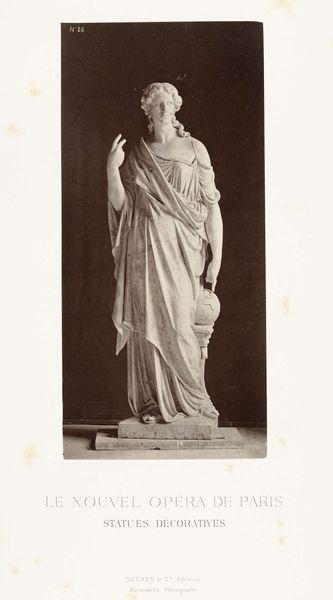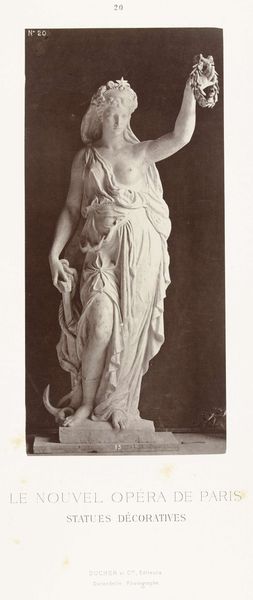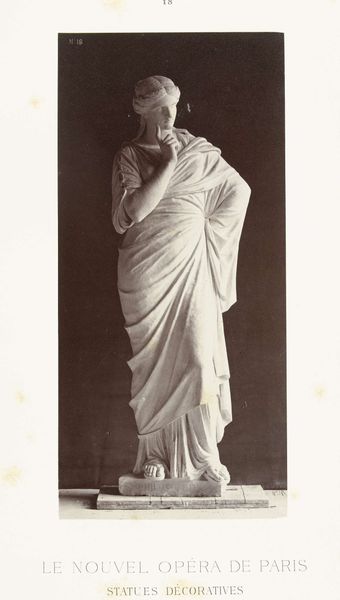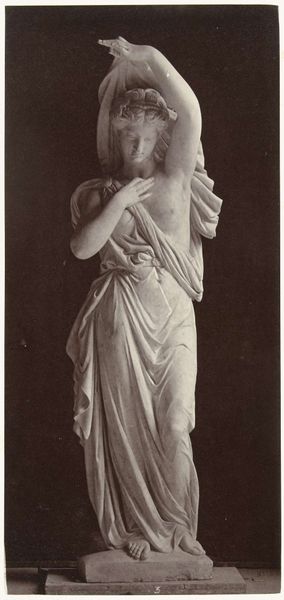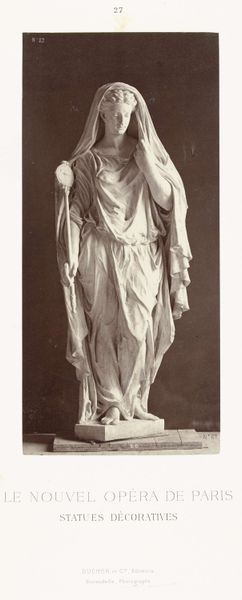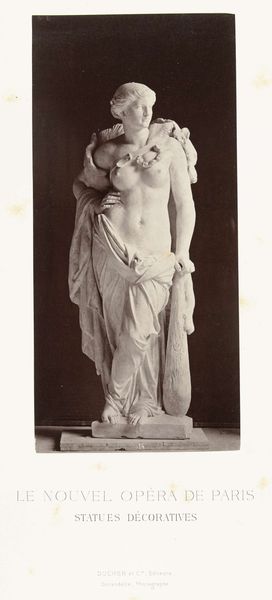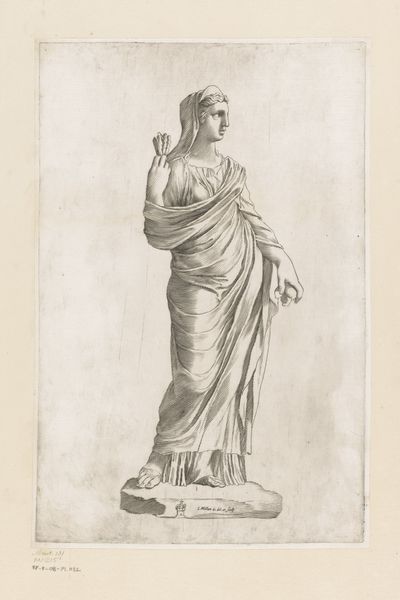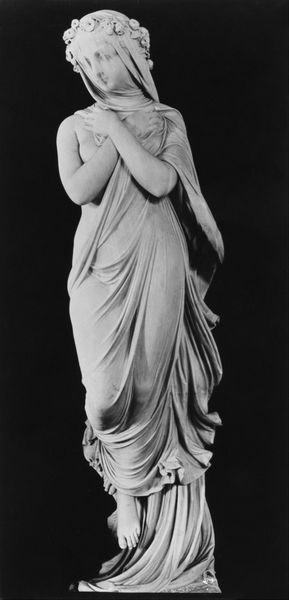
Marmeren beeld van een vrouw in een gewaad met een ontblote borst, de wijsvinger aan haar rechterhand wijst naar beneden. c. 1878 - 1881
0:00
0:00
Dimensions: height 275 mm, width 128 mm, height 620 mm, width 438 mm
Copyright: Rijks Museum: Open Domain
Curator: This is a photograph by Louis-Emile Durandelle, taken between 1878 and 1881, showcasing a marble sculpture of a woman in a robe, her breast exposed. Editor: The stark lighting and cool marble give her a real air of detached authority, almost judgmental. It's compelling but not exactly inviting. Curator: The piece clearly harkens back to Neoclassicism. The figure, with her exposed breast and classical drapery, references idealized forms. We see a romanticized image of female virtue intertwined with sensuality and the male gaze of the period. What social and political commentary does it suggest for you? Editor: It speaks volumes about the labor involved in both creating the sculpture and photographing it. Think of the quarrying, the sculpting, the transport of the marble – each a site of intense human activity. This contrasts sharply with the idealized and timeless representation of the female form, almost like a disembodied consumer object in that specific time period. Curator: Indeed. Durandelle's photograph is part of a larger documentation project, where he aimed to reproduce sculptures made during a particular socio-historical context. So it also stands as an example of artistic patriarchy— the woman here frozen, made permanently compliant. The subtle but assured gesture with her pointing finger also begs questions about who she indicts and for what reason. Editor: And, the industrial processes are just as crucial, I think. Photography here, as a medium, facilitated the reproduction and wider dissemination of these sculpted forms, embedding them within the burgeoning visual culture and expanding notions of femininity and power. The industrial reproducibility of classical art, how fascinating. Curator: Precisely. This piece presents such fertile ground for thinking about the confluence of history, representation, and ideology. It leaves us contemplating how images of women, labor, and capital intersect even now. Editor: Agreed, there is so much we can unravel from this still frame, between process, its place in the world of image making and that eternal gaze on female representation, even to this day.
Comments
No comments
Be the first to comment and join the conversation on the ultimate creative platform.
